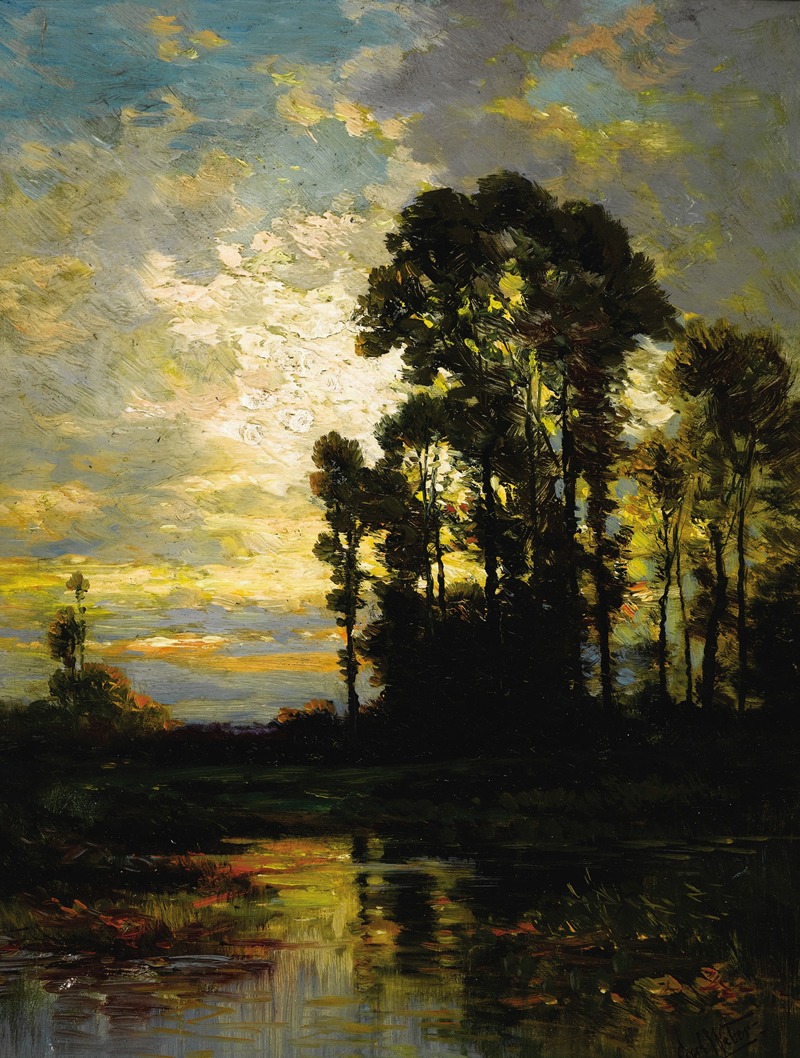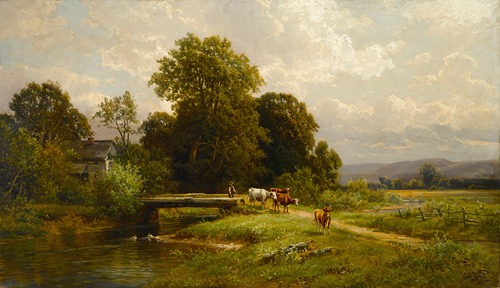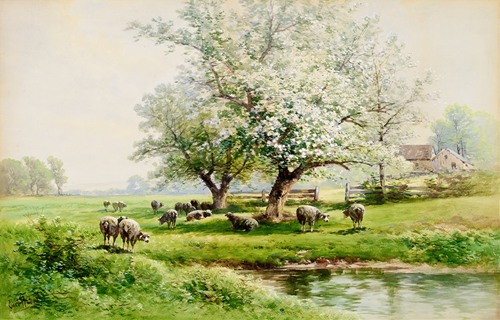
Carl Weber was born in Philadelphia, the son of the German immigrant and landscape painter Gottlieb Daniel Paul Weber (1823–1916). Carl and his father went to Darmstadt in 1861 and were guests of the Grand Duke of Hessia-Darmstadt. He studied at the Munich Royal Academy of Fine Art with the landscapist Karl Raupp (1837–1918). He also took private lessons from two professors at the Städelsche Kunstinstitut in Frankfurt, the genre and landscape painter Jakob Becker (1810–1872) and the history painter Johann Eduard von Steinle (1810–1886), both professors at the Stäedelsche Kunstinstitut in Frankfort.
The institute’s records indicate that Weber had never been registered there, so he may have taken private lessons from Becker and Steinle. Afterwards he spent a year in Paris. Weber returned to Philadelphia sometime in the mid-1870s. He married Clara Kaiser, daughter of the noted interior decorator Otto Ferdinand Maximillian Constantine von Kaiser, who was related to the German emperor Wilhelm II. Weber shared a studio with his cousin, the musician Carl Philip Weber, and exhibited intermittently at the Pennsylvania Academy of the Fine Arts from 1876 to 1905 and at the Philadelphia Art Club from 1891 to 1908. He also exhibited at the National Academy of Design from 1881 to 1893.
He was a member of the Philadelphia Artists’ Fund Society and the American Art Association, which awarded him a Gold Medal in 1902. After 1891 Weber worked at a studio at 816 Chestnut Street, the same address as Earle’s Gallery, where many Philadelphia artists exhibited and sold their work. He received an honorable mention both at the World’s Columbian Exposition in Chicago in 1893 and at the Atlanta Exposition in 1895. Weber died in Ambler, Pennsylvania, and was buried at Rose Hill cemetery.¹ Weber was a successful landscape painter in Philadelphia, particularly noted for his views of rural Pennsylvania; many of his paintings were done in the vicinity of Johnstown. Occasionally he painted in New Jersey, New England, and Illinois.


